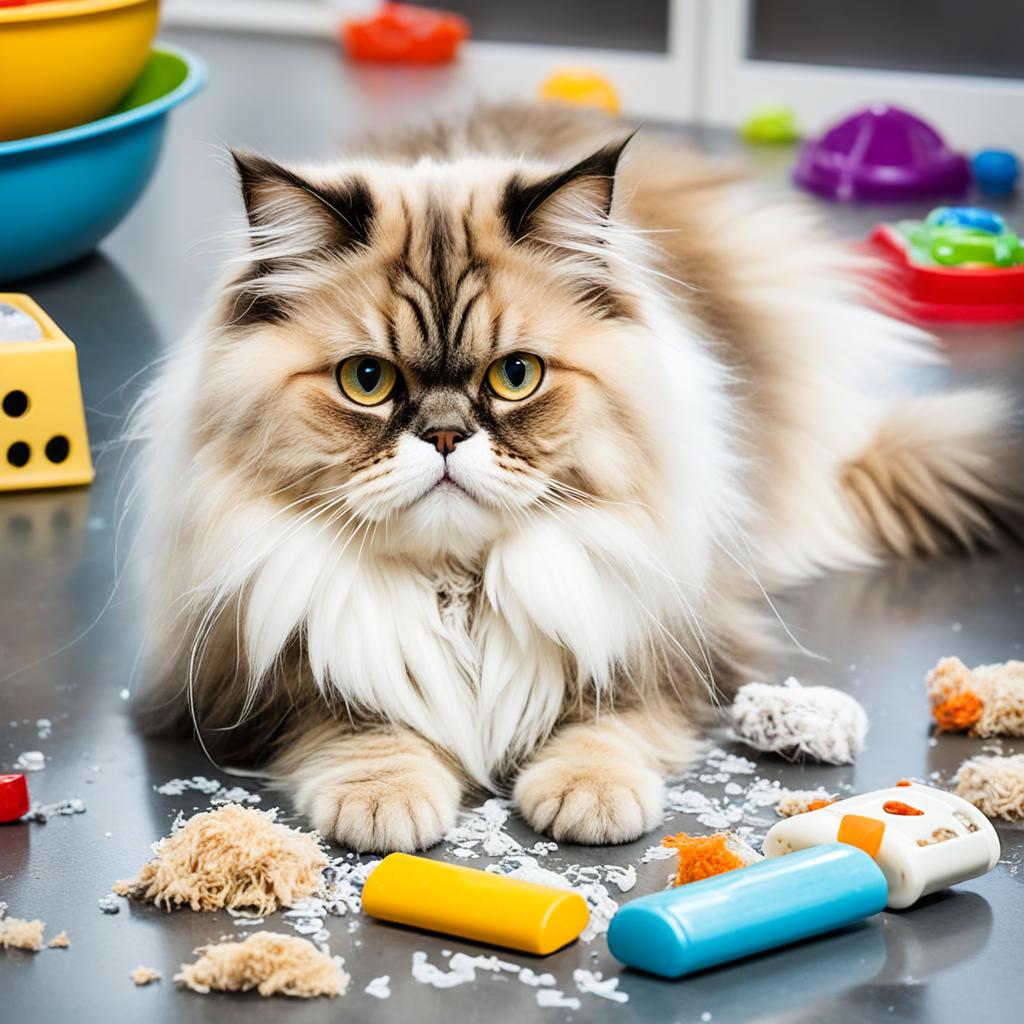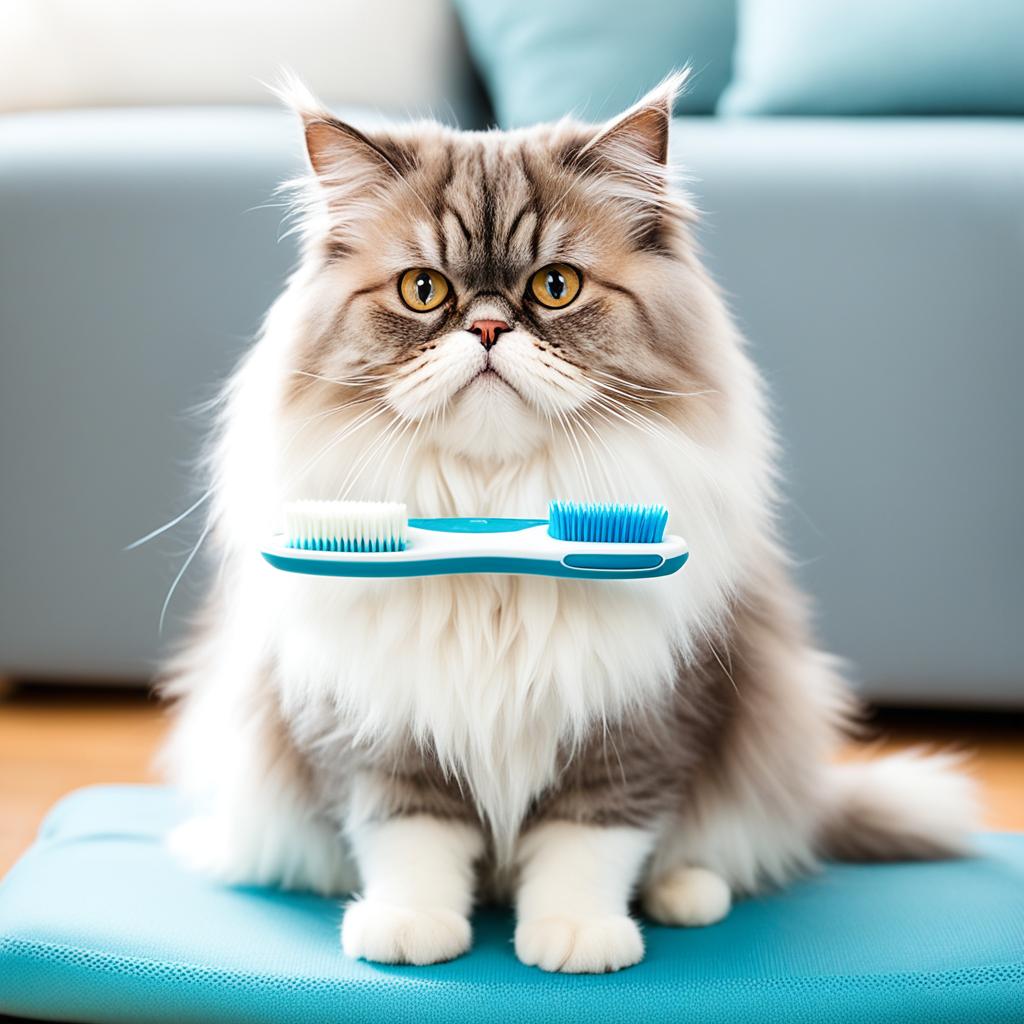Nearly 65% of Persian cats have genetic health problems. They are known for their fluffy coats and calm personalities. These cats have been companions since ancient times.
They are perfect for families and get along with kids and other pets. But, their fur needs to be brushed often. They also need a lot of love and attention and should not be left alone.
Persian cats face several health challenges. They need careful care to stay healthy. Owners need to watch their cat’s health closely. Partnering with vets is crucial for a cat’s well-being.
Key Takeaways
- Persian cats require regular brushing to prevent matting.
- They have quiet voices and gentle dispositions, making them family-friendly.
- These cats are prone to several health issues due to genetic factors.
- It is essential to monitor and be proactive about your Persian cat’s health.
- Partnering with veterinary professionals helps to manage Persian cat medical conditions effectively.
Introduction to Persian Cats and Their Health

The Persian cat is known for its fancy looks and cool attitude. These cats have a lot of hair that makes them look like little royals. They are friendly and don’t make much noise, loving life indoors where it’s safe.
Persians need special care, like watching their weight and brushing their fur every day. This care helps build a strong bond between them and their owners. Good care also means taking them for check-ups often and knowing about any sicknesses they might get.
- Commit to regular grooming to prevent matting and maintain coat health.
- Schedule routine veterinary visits to monitor for Persian cats health problems.
- Maintain a healthy diet to prevent obesity, a common Persian breed cat health risk.
- Be aware of genetic predispositions and proactive in health management.
Genetic Predispositions in Persian Cats

Persian cats often have genetic traits that need special attention. It’s important to know about these traits. This knowledge helps in keeping your beloved cat healthy.
Heart Disease in Persian Cats
Heart disease, like hypertrophic cardiomyopathy (HCM), is common in Persian cats. HCM thickens the heart walls, leading to possible heart failure. Keeping an eye out for symptoms and visiting the vet regularly are key parts of caring for Persian cats with heart issues.
Polycystic Kidney Disease (PKD)
Polycystic Kidney Disease (PKD) is a significant problem for Persians. It causes cysts to form in the kidneys, affecting their function. Detecting it early with genetic tests is crucial. This early action can help your cat have a better life even with PKD.
| Condition | Description | Management Tips |
|---|---|---|
| Heart Disease (HCM) | Thickening of the heart walls leading to heart failure. | Regular veterinary check-ups, monitor for symptoms like lethargy. |
| PKD | Formation of cysts in the kidneys, causing renal dysfunction. | Genetic screening, early diagnosis, tailored diet plans. |
Knowing about conditions like heart disease and PKD is critical for Persian cat owners. It helps you provide the best care. Following these care tips can help prevent health problems. This, in turn, improves the life of your Persian cat.
Maintaining Oral Health

Persian cats need good dental care because of their unique faces. Due to their special facial structure, they often face a lot of teeth problems. Their teeth may be too close together, making it hard to keep them clean.
This leads to a common issue: tartar build-up. Tartar can cause gum issues and harm the roots of their teeth.
Keeping your Persian cat’s teeth healthy means creating a routine. This includes:
- Regular tooth brushing
- Periodic veterinary examinations
- Using dental treats to reduce tartar
- Ensuring a diet that supports dental health
It’s important to take care of your cat’s teeth to prevent bigger problems. This is not only about stopping bad breath. It’s about making sure your Persian cat is happy and healthy. With regular care, you can protect your feline friend from dental and overall health issues.
Common Respiratory Issues in Persian Cats

Persian cats often have breathing problems because of their unique face shape. This can cause several respiratory issues for them. It’s important to know about these to keep your Persian cat healthy.
Brachycephalic Airway Syndrome
Many Persian cats face Brachycephalic Airway Syndrome. This syndrome includes issues like small nostrils and a long soft palate. These issues can make breathing loud and hard for them.
Cats with Brachycephalic Airway Syndrome may sound noisy when they breathe or snore while sleeping. They might also not be able to exercise like other cats.
Frequent Upper Respiratory Infections
Persian cats are also more prone to upper respiratory infections. Their face shape contributes to this. Signs of infection include coughing, wheezing, and struggling to breathe.
If you see these symptoms, it’s important to take your cat to the vet right away. Quick treatment can prevent the infection from getting worse.
To help prevent these problems, keep your cat away from dust. Also, try to keep their stress low. Regular visits to the vet are essential. They help catch any issues early and keep your cat well.
Eye Health Concerns
Persian cats need extra care for their eyes because of their big, prominent eyes. They are at risk for eye problems because of the way their faces look along with their long fur. A major issue is too much tearing, which stains their face. Keeping their eye area clean is a must, not just for looks but also for good health.
Entropion is also common in Persian cats. It’s when the eyelid turns in, which can hurt their eyes. Watch for signs like squinting or red eyes. If your Persian cat seems uncomfortable, visiting the vet regularly can help. This ensures that any eye problems are spotted and treated quickly.
Keeping your home clean and safe is vital for your cat’s eye health. Make sure there are no sharp things around. Regular cleaning stops your cat from getting eye infections or injuries. These simple steps are key to keeping your Persian cat’s eyes healthy and their overall health good.




